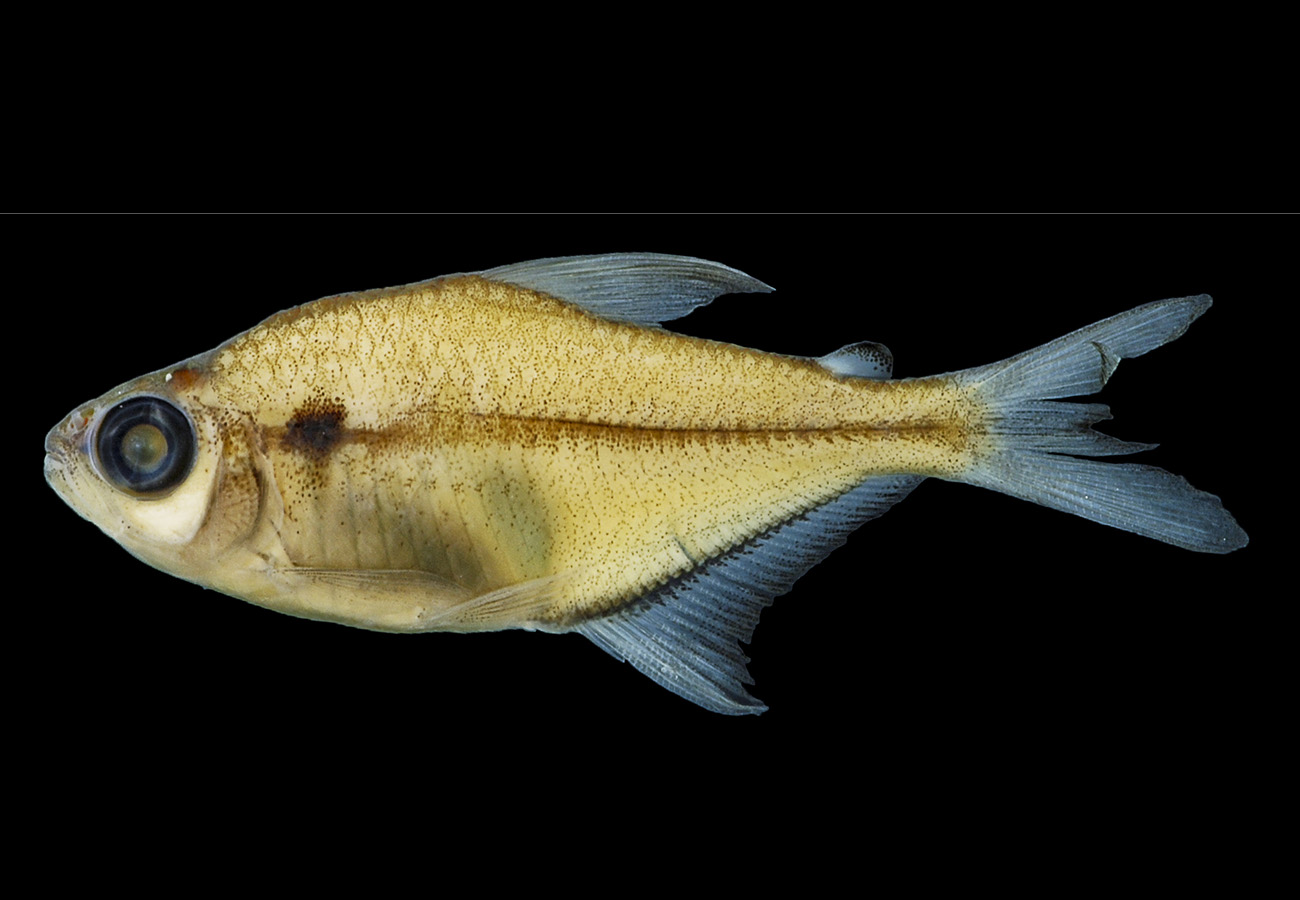Abstract
A new genus and new species of Atalophlebiinae, Klugephlebia kodai Selvakumar, Subramanian & Sivaramakrishnan, are described based on male and female imagos and larvae from Palni hills of the southern Western Ghats of India. The imago of Klugephlebia gen. n. can be differentiated from all other genera of Atalophlebiinae by having the combination of vein MP forked slightly less than half of the distance from base to margin, MP2 attached at base to vein MP1 by a crossvein, a distinctive shape of the hindwing, dissimilar claws on each leg, and distinctive genitalia structures. The larva can be distinguished from other Atalophlebiinae larvae by having the combination of gills present on abdominal segments 1–7, dorsal and ventral portions of lamellae of gills 1 slender and lanceolate with branched tracheae, dorsal and ventral portions of lamellae of gills 2–7 wider & lanceolate and long & suddenly tapering at apex, fore and mid femora with regular rows of long thin setae on outer margins, denticles on claws progressively larger apically, a distinctive labrum, the maxillary palp short with long setae on third segment, and the third segment of the labial palp with distinct setation. The larvae cling to the underside of boulders in the middle of streams where the boulders lie amidst sand and silt. Updated keys to the genera of south Indian Leptophlebiidae are provided.
References
Arumuga Soman, A.K. (1991) A new species of Thraulus (Ephemeroptera: Leptophlebiidae: Atalophlebiinae) from Nilgiris, South India. Journal of Bombay Natural History Society, 88, 99–102.
Christidis, F. (2001) A cladistic analysis of Austrophlebiodes and related genera (Leptophlebiidae: Atalophlebiinae). In: Dominguez, E. (Ed), Trends in Research in Ephemeroptera and Plecoptera. Kluwer Academic/Plenum Publishers, New York, pp. 305–312.
https://doi.org/10.1007/978-1-4615-1257-8_34Christidis, F. (2005) Phylogenetic relationships of the Australian Leptophlebiidae. Invertebrate Systematics, 19, 531–539.
https://doi.org/10.1071/IS05022Dinakaran, S., Balachandran, C. & Anbalagan, S. (2009) A new species of Choroterpes (Ephemeroptera: Leptophlebiidae) from a tropical stream of south India. Zootaxa, 2064, 21–26.
Grant, P.M. & Sivaramakrishnan, K.G. (1985) A new species of Thraulus (Ephemeroptera: Leptophlebiidae) from southern India. Florida Entomologist, 68 (3), 424–432.
https://doi.org/10.2307/3495129Kluge, N.J. (1994) Habrophlebiinae subfam. n. with description of a new species of Habroleptoides from the Caucasus (Ephemeroptera: Leptophlebiidae). Zoosystematica Rossica, 3, 35–43.
Kluge, N.J. (2014) New Oriental tribe Iscini, new non-dilatognathan species of Notophlebia Peters & Edmunds 1970 and independent origin of Dilatognathus-type mouth apparatus in Atalophlebiinae (Ephemeroptera: Leptophlebiidae). Zootaxa, 3760 (4), 522–538.
https://doi.org/10.11646/zootaxa.3760.4.2Peters, W.L. (1975) A new species of Indialis from India (Ephemeroptera: Leptophlebiidae). Pan-Pacific Entomologist, 51 (2), 159–161.
Peters, W.L. & Edmunds, G.F. Jr. (1964) A revision of the generic classification of the Ethiopian Leptophlebiidae. Transactions of the Royal Entomological Society of London, 116, 225–253.
https://doi.org/10.1111/j.1365-2311.1964.tb01082.xPeters, W.L. & Edmunds, G.F. Jr. (1970) Revision of the generic classification of the Eastern hemisphere Leptophlebiidae (Ephemeroptera). Pacific Insects, 12, 157–240.
Peters, W.L. & Edmunds, G.F. Jr. (1972) A revision of the generic classification of certain Leptophlebiidae from southern South America (Ephemeroptera). Annals of the Entomological Society of America, 65, 1398–1414.
https://doi.org/10.1093/aesa/65.6.1398Peters, W.L. & Gillies, M.T. (1995) Square facets in a hexagonal world. In: Corkum, L.D. & Ciborowski, J.K. (Eds), Current Directions in Research on Ephemeroptera. Canadian Scholar’s Press Incorporated, Toronto, pp. 371–375.
Selvakumar, C., Arunachalam, M. & Sivaramakrishnan, K.G. (2013) A new species of Choroterpes (Ephemeroptera: Leptophlebiidae) from Southern Western Ghats, India. Oriental Insects, 47 (2–3), 169–175.
Selvakumar, C., Janarthanan, S. & Sivaramakrishnan, K.G. (2015) A new species of the Choroterpes Eaton, 1881 subgenus Monophyllus Kluge, 2012 and a new record of the subgenus Choroterpes, s.s. (Ephemeroptera: Leptophlebiidae) from southern Western Ghats, India. Zootaxa, 3941 (2), 284–288.
https://doi.org/10.11646/zootaxa.3941.2.8Sivaramakrishnan, K.G. (1984) A new genus and species of Leptophlebiidae: Atalophlebiinae from southern India (Ephemeroptera). International Journal of Entomology, 26 (3), 194–203.
Sivaramakrishnan, K.G. (1985a) New genus and species of Atalophlebiinae (Ephemeroptera: Leptophlebiidae) from southern India. Annals Entomological Society of America, 78, 235–239.
Sivaramakrishnan, K.G. (1985b) Description of the female imago and eggs of Indialisbadia Peters & Edmunds (Ephemeroptera: Leptophlebiidae). Oriental Insects, (1984) 18, 95–98.
Sivaramakrishnan, K.G. & Hubbard, M.D. (1984) A new species of Petersula from southern India (Ephemeroptera: Leptophlebiidae). International Journal of Entomology, 26 (3), 204–205.
Sivaramakrishnan, K.G. & Peters, W.L. (1984) Description of a new species of Notophlebia from India and reassignment of the ascribed nymph of Nathanella (Ephemeroptera: Leptophlebiidae). Aquatic Insects, 6 (2), 115–121.
https://doi.org/10.1080/01650428409361173Sivaramakrishnan, K.G. & Venkataraman, K. (1987) Biosystematic studies of south Indian Leptophlebiidae and Heptageniidae in relation to egg ultrastructure and phylogenetic interpretations. Proceedings of Indian Academic Science (Animal Science), 96 (5), 637–646.
https://doi.org/10.1007/BF03179618Sivaramakrishnan, K.G., Venkataraman, K. & Balasubramanian, C. (1996) Biosystematics of the genus Nathanella Demoulin (Ephemeroptera: Leptophlebiidae: Atalophlebiinae) from south India. Aquatic Insects, 18 (10), 19–28.
https://doi.org/10.1080/01650429609361598Towns, D.R. & Peters, W.L. (1996) Leptophlebiidae (Insecta : Ephemeroptera). Fauna of New Zealand, Number 36. Manaaki Whenua Press, Lincoln, Canterbury, New Zealand, 141 pp.

